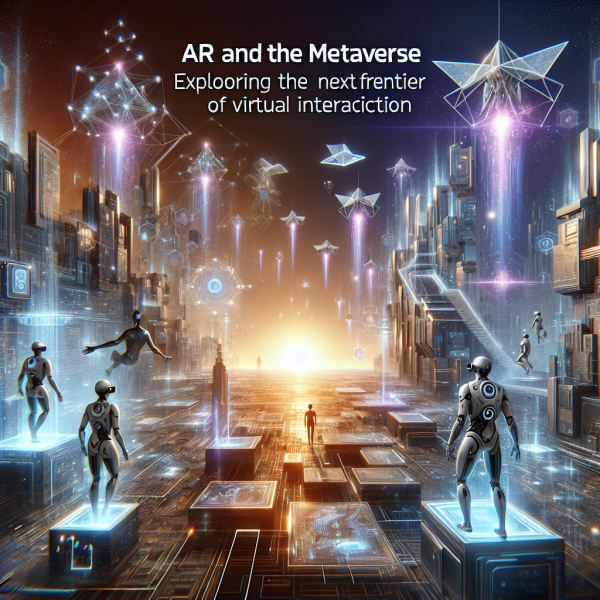The Road Ahead: Navigating the Challenges of Quantum Computing Integration

The Road Ahead: Navigating the Challenges of Quantum Computing Integration
As we stand on the precipice of a new technological era, quantum computing promises to revolutionize industries from pharmaceuticals to finance. The allure of harnessing quantum bits (qubits) to outperform classical computers in specific tasks tantalizes researchers, entrepreneurs, and governments alike. However, alongside this promise lies a complex web of challenges that must be navigated to successfully integrate quantum computing into mainstream applications.
Understanding Quantum Computing
Before diving into the challenges of integration, it’s essential to grasp the fundamentals of quantum computing. Unlike classical computers that rely on bits as the smallest unit of data, existing in one of two states (0 or 1), quantum computers leverage qubits that can exist in multiple states simultaneously, thanks to the principles of superposition and entanglement. This allows quantum computers to perform calculations at speeds unattainable by classical systems, making them particularly adept at solving complex problems, such as optimization, cryptography, and simulation of molecular interactions.
Major Challenges of Integration
1. Technical Barriers
Quantum computing is still in its nascent stages, with various technology challenges that need to be overcome. For instance, qubits are highly susceptible to environmental noise, leading to what’s known as decoherence, which compromises their ability to perform reliable computations. Building systems that can maintain qubits in stable states long enough to conduct useful calculations is a primary challenge.
Additionally, creating scalable quantum systems is another technical hurdle. Many current quantum computers have a limited number of qubits, making them impractical for widespread use. Research and development efforts are ongoing to enhance qubit coherence times, error rates, and mechanisms for scaling up qubit numbers while maintaining control.
2. Integration with Existing Systems
As quantum computing matures, integrating these new systems with existing classical computing infrastructure will be crucial. Organizations will not abandon their classical systems overnight; instead, they will seek hybrid solutions that leverage the strengths of both classical and quantum computing.
This integration poses significant challenges, particularly in data transfer and algorithm compatibility. Developers must create algorithms that can effectively offload specific tasks to quantum machines while ensuring seamless communication between systems. New programming languages or paradigms may be necessary to facilitate this interplay, a process that requires extensive training for the workforce.
3. Skill Gap and Workforce Development
The tech industry is already grappling with a skills shortage in fields such as artificial intelligence and data science, and quantum computing presents an additional layer of complexity. A new breed of experts is needed—scientists, engineers, and computer programmers who understand quantum mechanics as well as conventional computing.
Educational institutions and training programs will need to adapt rapidly to meet this demand. Collaborations between academia and industry can help cultivate a pipeline of skilled professionals conversant in the intricacies of quantum technologies.
4. Security and Ethical Considerations
The advent of quantum computing raises significant security concerns, particularly regarding encryption. Many of the cryptographic protocols currently in use, such as RSA, are vulnerable to potential quantum attacks. Organizations must take proactive steps to transition to quantum-resistant encryption to guard against future threats.
Ethically, the integration of quantum computing may also lead to disparities in access and capability, further exacerbating existing inequities. Policymakers and tech leaders must strive to establish frameworks that promote equitable access to quantum technologies to prevent a division between those who can leverage these tools and those who cannot.
5. Regulatory and Standardization Challenges
The rapid evolution of quantum technology necessitates robust regulatory frameworks to govern its use. However, the unique nature of quantum computing complicates standardization efforts. Stakeholders must engage in dialogue to create guidelines that promote innovation while ensuring safety, reliability, and ethical use.
This process will likely be iterative, evolving as the technology develops and new use cases emerge. Governments and international organizations must work together to establish coherent policies that encourage responsible quantum research and applications.
The Road Ahead
Despite these challenges, the road ahead for quantum computing integration is paved with opportunity. As advancements continue, industries such as healthcare, logistics, and materials science stand to benefit immensely from the enhanced computational capabilities that quantum technologies offer.
Public and private investments in research and development will play a critical role in overcoming existing barriers. Open collaboration between academic institutions, industry stakeholders, and governments will create a fertile ground for innovation, sparking breakthroughs that could redefine problem-solving.
In conclusion, navigating the integration of quantum computing is a multifaceted challenge that requires a concerted effort across the tech ecosystem. By addressing technical, educational, ethical, and regulatory hurdles now, we can better prepare to harness the full potential of quantum computing in the coming years, ensuring that it serves to advance society and create a more equitable future for all.













